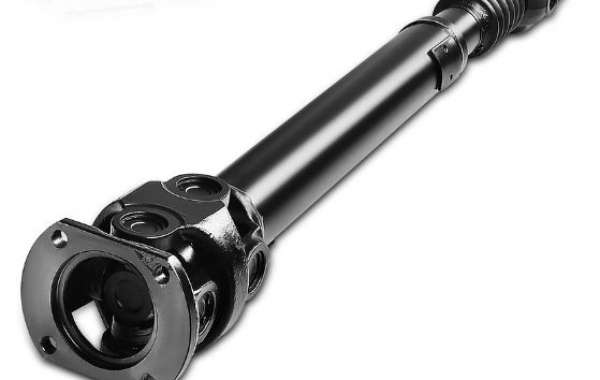The driveshaft, also known as the propeller shaft, is a crucial part of a vehicle's drivetrain system. It transfers rotational power from the engine and transmission to the wheels, enabling motion. Found primarily in rear-wheel-drive, all-wheel-drive, and four-wheel-drive vehicles, the driveshaft is essential for smooth and efficient power delivery. In this article, we’ll explore the function, components, types, and maintenance of driveshafts like a premium driveshaft.
What is a Driveshaft?
A driveshaft is a cylindrical, tubular component that connects the transmission to the differential in a vehicle’s drivetrain. Its primary role is to transmit torque while accommodating variations in distance and alignment between these components. By doing so, it ensures the wheels receive the power needed for propulsion.
Key Components of a Driveshaft
Shaft Tube
- A hollow metal tube, usually made of steel or aluminum, designed to withstand high torque and rotational forces.
Universal Joints (U-Joints)
- Flexible joints that allow the driveshaft to rotate at varying angles, accommodating suspension movements and misalignment.
Slip Yoke
- Allows the driveshaft to adjust its length as the suspension compresses or extends.
Center Bearing (if applicable)
- Found in longer driveshafts, it supports the shaft and reduces vibration in two-piece designs.
Flanges and Couplings
- Connect the driveshaft to the transmission and differential securely.
How Does a Driveshaft Work?
Torque Transmission
- The engine generates power that is transferred through the transmission to the driveshaft.
Rotation and Flexibility
- The driveshaft rotates at high speeds to deliver torque to the differential, which distributes it to the wheels. U-joints and slip yokes ensure flexibility during operation.
Smooth Power Delivery
- The driveshaft compensates for variations in angle and distance caused by suspension movement, ensuring consistent power flow.
Types of Driveshafts
Single-Piece Driveshaft
- A single, continuous tube commonly used in shorter vehicles like sports cars and sedans.
Two-Piece Driveshaft
- Used in longer vehicles such as trucks and SUVs, with a center bearing for added support.
Carbon Fiber Driveshafts
- Lightweight and strong, these driveshafts are ideal for high-performance vehicles due to their superior strength-to-weight ratio.
Signs of a Failing Driveshaft
Vibrations While Driving
- Excessive vibrations often indicate worn U-joints, imbalance, or damaged bearings.
Clunking Noises
- Unusual sounds during acceleration or shifting can signify a failing driveshaft.
Difficulty Turning
- A malfunctioning driveshaft can reduce flexibility, making turning difficult.
Lack of Power
- A damaged driveshaft may fail to transmit torque effectively, affecting acceleration.
Maintaining and Replacing a Driveshaft
Inspect Regularly
- Check for visible damage, corrosion, or wear on the shaft and its components.
Lubricate U-Joints
- Proper lubrication ensures smooth operation and reduces wear.
Balance and Alignment
- A misaligned or unbalanced driveshaft can cause vibrations and premature wear.
Replace When Necessary
- Timely replacement of worn or damaged driveshaft components prevents further drivetrain issues.
Importance of a Healthy Driveshaft
A well-maintained driveshaft is essential for:
- Smooth Driving: Reducing vibrations and noise for a comfortable ride.
- Optimal Performance: Ensuring efficient power delivery from the engine to the wheels.
- Vehicle Longevity: Protecting other drivetrain components from undue stress and damage.
Conclusion
The driveshaft is an indispensable part of a vehicle’s drivetrain, ensuring effective power transmission and smooth operation. Regular maintenance, including inspections and timely replacements, is crucial to its functionality and durability. Whether in a passenger car, truck, or performance vehicle, the driveshaft plays a pivotal role in delivering a safe and efficient driving experience.














